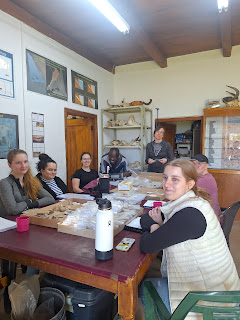Closing Site and the Final Week

Closing Site: the Final Week The last week on site was hectic, as they always are. Finishing closing lots, replacing sandbags, and inventorying everything from blankets and plastic bags to specialist samples for further study. In all the week was a blur. Thursday in particular stands out as a highlight of the trip. In the middle of all the inventorying and closing site, a few of us began marinating beef and chicken for the final braai. Braai's are a cornerstone of South African culture, a barbecue on open coals doesn't quite sum it up and asking me to properly explain it is a bit like asking a Southerner to explain a cookout/pig pickin. The sense of community it provides is more comparable to a regular fourth of July celebration than anything else. Thursday was our last braai as a group as many of us were leaving Friday once work was finished, and even more early Saturday morning. There was a potent bittersweet taste to the crisp night air as we celebrated the end of the season...



.jpg)

